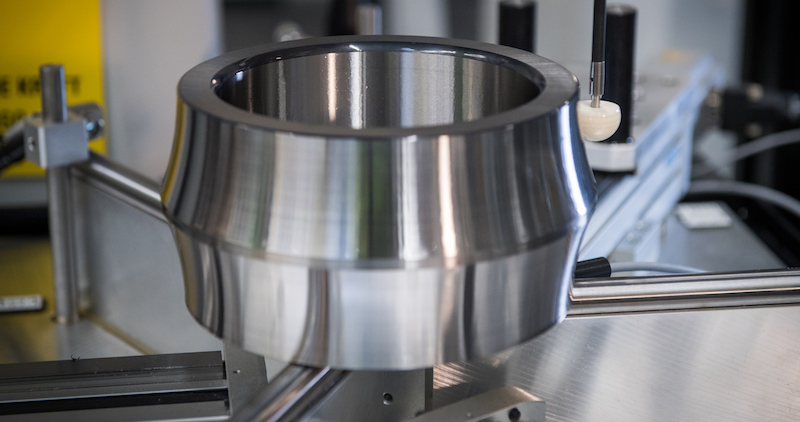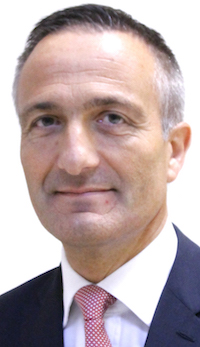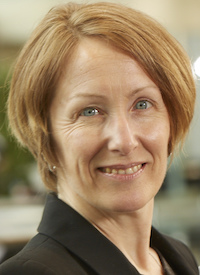SKF looks to digitalise its business model and manufacturing operations. AMS spoke to Luc Graux, director of manufacturing and process development, to find more about the impact of IoT

What effect is the move to an I4.0 based operation having on SKF’s production?We are certainly trying to apply the same I4.0 principle to our factories as those being offered to our customers. The challenge is to operate the manufacturing operations so they provide a demonstration of what can be achieved; not just a demonstration but really use it for us to develop our own competences and learn and extract as much as possible from [the application of] I4.0.
We have a number of applications in operation at present such as intelligent grinding, which is a core competence for us, where we have self-learning machines and we can optimise cutting condition, quality and performance. Another innovation is providing the machine operators with mobile devices that provide real-time information allowing them to make [informed] decisions on the shopfloor so avoiding delays.
The intelligent grinding machines, is this new equipment or upgraded existing machines?It’s a mixture of both and this is something we are doing in-house, so it’s SKF IP. We are buying in new machines that offer the latest technology then adding sensors and other devices to optimise the equipment. We are also upgrading our existing machines to be IoT compatible and we have identified ‘pool’ of 15 machines that will be upgraded all together to a defined a standard. We have been consolidating our manufacturing footprint so some factories have been improved with new equipment and we have been able to recover a number of the older machines which have been put into this upgrade programme.

"For us Industry 4.0 is no longer a strategy but a reality. We are rolling systems out across our production network [and] working on the next steps, such as 5G for faster transmission of data" - Luc Graux, SKF
Part of the I4.0 principle is the transfer of data models created by different suppliers through the value chain optimising the process and quality of the final part. Is this something SKF has adopted?We are certainly working on our end-to-end process. We are working on our manufacturing operations to be smarter and more flexible, and we have been developing our relationships with customers to optimise our ordering processes. The next step will be to develop the connection with our suppliers.
Has the new business model, revealed today, had an effect on manufacturing operations in terms of the product portfolio, batch sizes, etc.?It’s certainly had an effect in terms of the developing the need for flexibility and handling smaller batches. We are aligning our production footprint much more with that of our customers to get closer to our markets and this enables us to provide shorter lead times and better service.
[sam_ad id=17 codes='true']Where as in the past Europe was our central production location from where we would export to the rest of the world, now we have followed our customers to set up production in different regions in Asia and the Americas. This has resulted in a considerable reduction in the size of production batches in Europe made on the older equipment but we still need to be competitive here. This has really driven the need to be flexible, producing smaller batches at a lower cost. So the main challenge is improving flexibility and the technology that’s available now (robotics, AGVs, etc.) is exactly what we need.
How are you dealing with the demand from the automotive sector for smaller, lighter bearings?There are challenges at the product design level in terms of materials, performance, weight, etc. From a manufacturing perspective the improved flexibility in production helps us cope with different product designs. So we haven’t any major problems in manufacturing.
Have you implemented any of the new digital technologies, such as the HoloLens, in you production operations?We’ve been trialling the HoloLens system [Microsoft’s augmented reality glasses] for quality control audits. These glasses allow the auditor to monitor and check processes remotely, without the need to be onsite. It’s still very new technology, but so far has proved successful.
For us Industry 4.0 is no longer a strategy but is now a reality. We have made the initial investments [at the Gothenburg plant] and we are now rolling these systems out across our production network. We are also working on the next steps, such as 5G for faster transmission of very large amounts of data.
Has implementing I4.0 systems made a difference to the layout of your new production lines?It is a change from the older, fixed line layout to a cell concept, which is more open and flexible.

SKF says its bearing production facility in Gothenburg is ‘serving as a real-world test-bed for world-class digital manufacturing’. Roberto Napione, manager of SKF’s Machine Centres of Excellence and Standardisation commented: “In today’s environment, we can no longer work in fixed production sequences, we want to take the real-time demand from the customer and produce those specific products in the volume batch required.”
According to SKF the Gothenburg facility has integrated a complete digital information network and automated a number of operations that where previously completed manually. It’s also utilising automated guided vehicles (AGV) to improve internal logistics. Napione noted: “We have simplified the process for setting up and adjusting the machines, so they can switch between products much faster than in the past. In some cases, we’ve even been able to reduce the time required for resetting close to zero, with the machine doing everything automatically.” The company claims that together, these changes have reduced the time required for a single bearing to flow through the full manufacturing process from days to hours.
A key aim of this upgrade has been to improve flexibility in the production operations. The company categorises this into two areas: ‘vertical’ flexibility; machines that can change tooling and switch between different operations automatically without having to stop production; ‘horizontal’ flexibility integrates all the processes through supply chain, procurement and manufacturing using a single communication platform.
 Victoria Van Camp: SKF’s customers are buying more than just a component (bearings), they are investing in ‘reliable rotation’
Victoria Van Camp: SKF’s customers are buying more than just a component (bearings), they are investing in ‘reliable rotation’Earlier this year SKF revealed a new business plan that goes far beyond only manufacturing and selling bearings. Victoria Van Camp, CTO & president, Innovation and Business Development, explained that SKF’s customers are buying more than just a component (bearings), they were investing in ‘reliable rotation’, but to deliver and support this requires a much wider range of technologies.
As with many tier suppliers with a high level of engineering competence, SKF is leveraging its expertise into becoming a solutions provider. Where the bearing manufacturer’s offer differs is in providing its product range on a performance related basis wherein the bearings and the installations are fitted with external sensors to remotely monitor operating conditions and parameters. The collected data is then used to produce much more accurate and effective service and maintenance schedules and procedures. This in helps optimise the operation of equipment and avoiding any unplanned downtime. The programme is called ‘Rotation for Life’ and SKF has partnered with IT supplier Honeywell, with the two companies having launched a pilot project to create a digital ecosystem to capture and analyse the large amounts of data produced by machine operations.
SKF has also developed its own mobile and cloud based system called Enlight. Machine operators can use the specially developed DataCollect app to collect inspection data on a mobile device, which can then be uploaded to the SKF cloud for analysis. Other support devices include using augmented reality systems such as Microsoft’s HoloLens augmented reality glasses. Fredrik Magnusson, head of SKF’s software development centre, explained the possibilities: “Imagine having access to an SKF application engineer or service technician on-demand, in real-time.” He added: “In many ways, augmented reality tools are an enabler. For our customers, they enable access to large amounts of data, in an aggregated form, that allows for smarter and quicker decision making…”








































